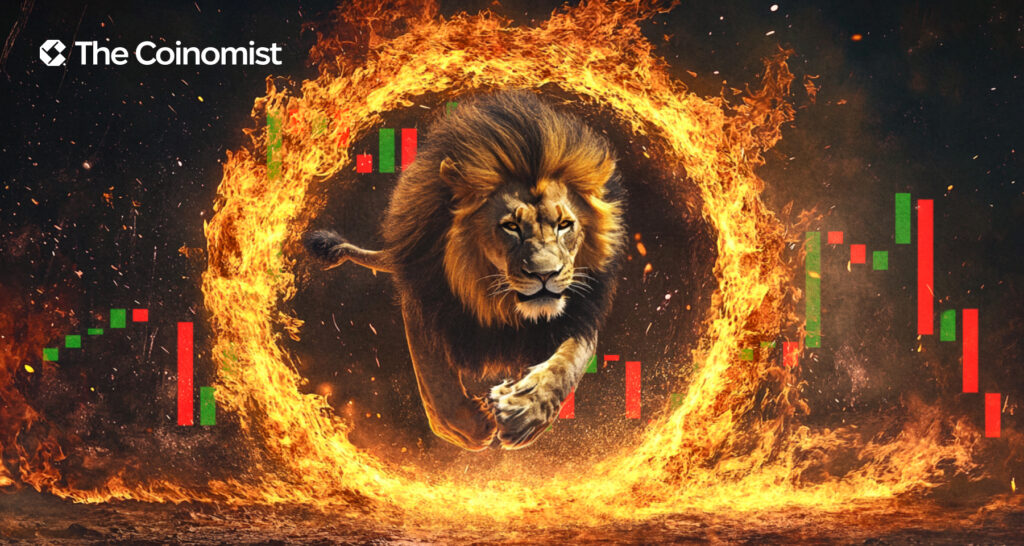
The Ethereum Pectra mainnet upgrade is hitting speed bumps as the team agrees more time is needed to test new features on the testnet.

Looking for Web3 graphic jobs? This guide explores opportunities in the fast-growing world of decentralized internet. Find out which design skills are in demand, where to land jobs, and how to build a career in the digital era.

The crypto market is now worth trillions of dollars, with new projects launching almost daily. However, an increasing number of crypto enthusiasts are questioning how to profit from cryptocurrencies without compromising their moral values.

Navigating the highs and lows of the crypto market requires a steady hand. How do you gauge your risk tolerance in crypto and tailor your trading approach accordingly? The answer lies in understanding your own psychology and applying strategies to handle market uncertainty.

The rise of Web3 is changing the rules of employment. In 2025, remote crypto jobs are no longer a niche—they’re the new standard, leaving Web2 behind in terms of flexibility and decentralization. What’s next for the Web3 job market?

The Ethereum Pectra mainnet upgrade is hitting speed bumps as the team agrees more time is needed to test new features on the testnet.

Just a month after the launch of TRUMP and MELANIA tokens and the high-profile collapse of LIBRA, the memecoin market has taken a sharp downturn, becoming one of the most debated topics in recent weeks.

U.S. President Donald Trump has signed an executive order to establish a Strategic Bitcoin Reserve and a Digital Asset Stockpile. Despite high expectations and optimism, the announcement sparked a mixed reaction in the market.

Donald Trump’s latest tariffs zero in on steel, aluminum, cars, and energy imports from China, Canada, and Mexico. Experts warn of inevitable price hikes, potential inflation spikes, and looming trade disputes, with possible ripples throughout the crypto landscape.

Bitcoin is surging, altcoins are rebounding from the recent dip, and even conservative investors are adjusting their strategies. And it all comes down to one man. Just how powerful is the Trump Effect on today’s crypto market?

How can a cryptocurrency hold any monetary worth? It isn’t recognized as paper currency or backed by precious metals, and it comes without government assurances. Yet Bitcoin and its peers are actively traded, serve as viable payment options, attract significant capital inflows, and integrate seamlessly into the global economy.

Trump’s meme coin isn’t an outlier—it’s part of a broader trend. Back in 2021, celebrities were minting NFTs, and by 2024, they had moved on to personal token launches. The connection between fame and crypto has been growing for years, even if many failed to see it.

Across continents, monuments have been erected to honor both cryptocurrencies and the figures who transformed the digital finance world. We explore the most well-known of these in our article.

Wow, what a rollercoaster of a year! Especially for crypto fans and even more so for Bitcoin holders and all those who have waited for the mother-of-all-crypto to cross its second major mark after the $50 thousand level, the $100 thousand level.

As usual, Crypto Twitter/X is buzzing with intriguing discussions: Today’s spotlight includes discussions about the upcoming crypto summit and market analysis.

San Francisco, December 2020. As the city prepared for the holiday season, tension gripped Ripple’s headquarters. Phones rang nonstop. Legal teams scrambled. A single document upended years of negotiations and threw crypto regulation into chaos.

El Salvador doesn’t have any plans to slow down its Bitcoin accumulation, President Nayib Bukele said while sharing the latest Bitcoin addition to the country’s strategic reserve.

Several key topics have garnered particular attention in the crypto community. On March 4, the US Senate overturned the IRS's DeFi rule, which required DeFi platforms to report their gross profits.

It takes just one post from Trump to stir the crypto market. Recently, he announced on Truth Social that the evaluation of a strategic crypto reserve is in progress as part of his broader Trump crypto policy.

There's been a lot of talk about possible changes to crypto tax policies in the U.S. One of the more controversial ideas floating around is “Trump no tax on crypto.” As Trump adopts a more crypto-friendly stance, major rumors have surfaced that he’s considering a 0% tax on crypto gains.

2025 isn’t exactly the most stable time for the economy: policy changes, trade tariffs, international tensions, and interest rate shifts are among the factors that make things more unpredictable. In times like these, people naturally start looking for alternatives, and one of the biggest ones has been crypto.

Matvii Diadkov, founder of Bitmedia, shared with us in an exclusive interview his expert insights on Web3 adoption, impact of GameFi and community-centering tendencies in the market.

The first crypto craze took place almost a decade ago. Overnight, many people found out about Bitcoin and its underlying technology, blockchain.

Volodymyr Nosov, CEO of Europe’s largest crypto exchange WhiteBIT, sat down with Dmytro Gordon, one of Ukraine’s most prominent journalists. The interview touched on Bitcoin, crypto, WhiteBIT, cars, keys to success, and business vision.

Practical Guide to Using the OKX Exchange OKX, formerly OKEx, started as a platform for cryptocurrency swaps. As it gained popularity, it expanded its services to become a full-scale exchange, supporting the buying and selling of a wide range of crypto assets. In January 2022, the platform rebranded, simplifying its name by removing the “Ex” […]

Singapore, one of the world's most advanced economies and a leading IT hub in Asia alongside Shanghai and Hong Kong, hosted this year's largest crypto conference, Token2049.

Are sky-high Ethereum fees getting you down? The folks at Zora have come up with an alternative, introducing their Layer 2 solution with lower transaction fees. This article will walk you through how to get involved with the project and earn some rewards.